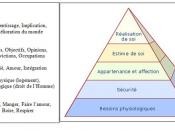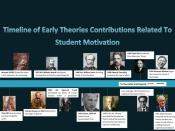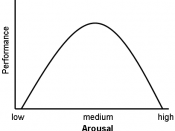Contents | |
Title | Page no. |
Introduction | 01 |
Model of consumer behavior | 02 |
Physical influences within an individual | 03 |
Motivation | 04 |
Perception | 05 |
Learning | 06 |
Attitudes | 06 |
Lifestyle | 06 |
Social influences affect consumer behavior | 07 |
Family | 07 |
Social class | 07 |
Reference group | 08 |
Cultural factor affect consumer behavior | 08 |
Culture | 08 |
Subculture | 09 |
Personal factors affect consumer behavior | 09 |
Age and stage of life | 10 |
Occupation | 10 |
Life style | 10 |
Individual are affected by the purchase situation | 11 |
The-consumer adoption process | 11 |
Factors influencing adoption process | 12 |
Readiness to try new product and personal influence | 12 |
Personal influence | 14 |
Characteristics of the innovation | 14 |
Organization's readiness to adopt innovation | 15 |
Conclusion | 16 |
Most economists assumes that consumers are economic buyers - people who know all the facts and logically compare choices in terms of costs and value received to get the greatest satisfaction from spending their time and money.
This view assumes that economic needs guide most consumers' behavior.
Economic needs are concerned with making the best use of a consumer's time and money as the consumer judges it. Some consumers look for the lowest price other will pay extra for convenience and others may weigh price and quality for the best value.
Marketing people are preoccupied with doing research and "getting the facts". They analyze the situation to make sure that truth is on their side. Then they sail confidently into the marketing arena, secure in the knowledge that they have the best product and that ultimately the best product will win.
It's an illusion. There is no objective reality. There are no facts. There are no best products. All that exists in the world of marketing are perceptions in the minds of the customer. The perception is the reality.
�
Marketing Stimuli | Environmental Stimuli | Buyers Black Box | Response | ||
Product Price Place Promotion | Economic Technological Social Cultural | Characteristics of the Buyer Buyers decision Making process | Product decision Brand decision Dealer decision Time decision Quality decision |
Most consumers appreciate firms that offer them improved value for the money they spend. But improved value does not just mean offering lower and lower prices.
Place decision can make it easier and faster for customers to make a purchase.
Product can be designed to work better require less service, or last longer.
Promotion can inform consumers about their choices-or explain product benefits interms of measurable factors like operating costs or the length of the guarantee.
These are known as marketing stimuli like-
Price
Place
Product
Promotion etc.
Many behavioral dimensions influence consumers. A Consumer buying behavior is influenced by Psychological factors, social factors, and cultural and personal factors.
Psychological Factors | Social Influences | Cultural Factors | Personal Factors | |||
Motivation Perception Learning Attitudes Life Style | Family Social Class Reference Group | Culture Sub- Culture | Age and Stage of life Occupation Economic Circumstances Life style |
Fig 02 : Characteristics of the buyer
�
PSYCHOLOGICAL INFLUENCES WITHIN AN INDIVIDUAL
Here we will discuss about the psychological factors. A person's buying choices are influenced by five major psychological factors-motivation, perception, learning, attitudes and lifestyle.
Motivation
A motive is any need that is sufficiently pressing to drive the person to act. Everybody is motivated by needs and wants. Needs are the basic forces that motive a person to do something. Needs are more basic than wants. Wants are " needs " that are learned during a person's life.
When a need is not satisfied, it may lead to a drive. A drive is a strong Stimulus that encourages action to reduce needs. In marketing, a product purchase results from a drive to satisfy some need.
Motivation theory suggests that we never reach a state of complete satisfaction.
Perception
Perception determines what consumer sees and feel. A motivated person is ready to act. How the motivated person actually acts is influenced by her or his perception of the situation. Perception is the process by which an individual selects, organizes and interprets information inputs to create a meaningful picture of the world.
Consumer select varying ways to meet their needs sometimes because of differences in perception -how we gather and interpret information from the world around us.
People can emerge with different perceptions of the same object because of three perceptual process-selective exposures, selective perception and selective retention.
Selective exposure- our eyes minds seek out and notice only information that interests us.
Selective perception- we modify ideas, messages and information that conflict with previously learned attitudes and beliefs.
Selective retention- we remembers only what we want to remember.
These selective process help to explain why some people are not affected by some advertising. Our needs affect these selective processes. And current needs receive more attention.
Markets are interested in these selective processes because they affect how target consumers get and retain information.
Learning
Learning is a change in a person's thought processes caused by prior experience. When people act they learn. Learning involves change in individual's behavior arising from experience. Learning is developed through interplay of drives, cues, response and reinforcement.
Drive is describe as a strong stimulus that encourage action
Cues are minor stimuli that determine when, and how a person responds.
A response is an effort to satisfy a drive.
Reinforcement of the learning process occurs when the response is followed by satisfaction that is, reduction in drive. Reinforcement strengthens the relationship between cues and the response.
Attitudes and Beliefs
An attitude is a person's point of view toward something. The 'something' may be a product, an advertisement, a salesperson, a firm or an idea.
A beliefs is a person's opinion about something people's beliefs about a product or brand influence their buying decisions.
Life-style
Life style analysis is the analysis of a person's day-to-day pattern of living as expressed in that person's Activities, Interest, and opinions.
Lifetime analysis assumes that marketers can plan more effective strategies if they know more about their target markets. Understanding the lifestyle of target customers has been especially helpful in providing ideas for advertising themes.
Social influences affect consumer behavior
Consumer's buying behavior is also strongly affected by social factors as- family, social class, reference group, social rules and statuses.
Family
Relationship with other family members influences many aspect of consumer behavior. The family is the most important consumer buying organization in society.
It is important for the marketers to know who are the real decision makers in family purchase. For example, in Norway women do most of the family shopping, a husband and wife may jointly agree on many important purchase, but some time they may have strong personal preference.
Social classes
A social class is a group of people who have approximately equal social position as viewed by others in the society. Almost every society has some social class structure. In most countries social class is closely related to a person's occupation, but it may also be influenced by education, community participation, income, social skills, and other factors. Social classes show distinct product and brand preferences in many areas including clothing, home furnishing, leisure activities and automobiles. Marketers want to know what buyers in various social classes are like different social class buy different brands of product, wearing different dresses, eating different type of foods.
Reference group
A reference group is the people to whom an individual looks when forming attitudes about a particular topic. A person's reference group consist of all the group that have a direct or indirect influence on the person's attitudes and behavior. A consumer's decision to buy or not buy, depend on the opinions of others in that consumer's reference group. An opinion leader is a person who influences others.
Cultural factors affect consumer behavior
Culture
Culture is the whole set of beliefs, attitudes and ways of doing things of a responsible homogeneous set of people. We can think of Indian culture, Bangladeshi culture, and American culture. People within these cultural groupings tend to be more similar in out look and behavior. And culture is the fundamental determinant of a person's wants and behavior.
Subculture
Sometimes it is useful to think of subcultures within such groupings. For example within Indian culture, there are various religious and ethnic subcultures. Subculture includes nationalities, religious, racial groups and geographic regions. Subculture provides a more specific identification and socialization for the member of a particular cultural group.
PERSONAL FACTORS EFFECT CONSUMER BEHAVIOR
A person's buying behavior is strongly influenced by- buyer's age and stage in life cycle, occupations, economic circumstances, and life style.
�
Age and stage in life cycle
The buying behavior of a person's is affected by his or her age and stage in life cycle. Actually the taste, preferences and needs of people are changeable with respect to his or her age and stage in lifecycle. People buy different goods and services over his/her lifetime
Occupation
Buying behavior of a person's is influenced by his/her occupation pattern. For example there is far difference between buying behavior of a schoolteacher and a company president.
Economic circumstances
Economic condition of a person affects his/her buying behavior. Economic circumstances include- spendable income, savings and asset, borrowing power, and attitudes towards spending and saving. For example, high-income people can effort to buy a very expensive car.
Life style
Life style differs from people to people. The life style of two persons is different though these persons belong to same subculture, social class and occupation.
�
INDIVIDUALS ARE AFFECTED BY THE PURCHASE SITUATION
Why a consumer makes a purchase can affect buying behavior.
For example, a student buying a pen to take notes might pick up an inexpensive Cello ball pen. But the same student might choose a Parker pen as a gift for a friend.
Time influence a purchase situation. When consumer makes a purchase- and the time they have available for shopping- will influence their behavior.
Surroundings can affect buying behavior. Surroundings may encourage buying behavior. Surroundings may discourage buying behavior too.
The consumer-adoption process
"Marketing is not battle of product It's battle of perception"
Adoption is an individual's decision to become a regular user of a product. When consumer face a really new concept, their previous experience may not be relevant. This situation involves the adoption process-the steps individual go through on the way to accepting or rejecting a new idea.
In the adoption process, an individual moves through some fairly definite steps.
Awareness - the potential consumers comes to know about the product but lacks of information about it.
Interest - if the consumer becomes interested, he/she will gather general information and facts about the product. That is the consumer stimulated to seek information about the innovation.
Evaluation- a consumer begins to give the product a mental trial, applying it to his or her personal situation.
Trial- the consumer tries the innovation to improve his or her estimate of its value.
Decision- the consumer decides on either adoption or rejection. A satisfactory evaluation and trial may lead to adoption of the product and regular use.
Confirmation- The adopter continues to rethink the decision and search for support for the decision -that is further reinforcement.
Factors influencing adoption process
Products characteristics strongly influence the adoption of product. The following characteristics influence adoption process of the computers.
Readiness to try new products and personal influence:
The time of adoption is varying from people to people. For example some people are the first to adopt a new product, some housewife are the first to adopt new detergent power.
People can be classified into the adopter categories as show in the given figure below -
2.5 % 13.5% 34% 34% 16%
From the above figure we can say that, after a slow start, an increasing number of people adopt the innovation, the number reach a peak, and then it diminishes as fewer non-adopters remain.
According to Rogers there are five adopter groups.
Innovators- Innovators are venturesome; they are willing to try new ideas. First 2.5% adopters are known as innovators.
Early adopters- Early adopters are guide by respect. They adopt new ideas early by carefully. Next 13.5% adopters are under early adopters group.
Early Majority- The early majority group adopts new ideas before the average person. 34% people are under this group.
Late majority- The late majority are skeptical they adopt an innovation only after a majority have tried it.
Laggards- Laggards are tradition bound, they are suspicious of change. Here percentage is 16%.
Personal influence
In the adoption process of new product, personal influences have strong affect. Personal influence means purchase probability and the opinion of others person influence purchasing of one person.
Characteristics of the innovation
Some products are adopted by the people immediately where as others take a long time to get acceptance. The speed of acceptance depends upon five characteristics of a product. They are-
Relative advantage
The relative advantage refers to the degree to which the innovation appears superior to existing product. If the new mobile set contains more advantage than all other existing mobile sets then the people will accept it quickly
Compatibility
It refers to the degree to which the innovation matches the values and experience of the individuals. For example split Air Conditioner, Pajero car are highly compatible with upper class life style.
�
Complexity
It indicates the degree to which the innovation is relatively difficult to understand or use. For example, use of microwave oven.
Divisibility
It refers to the degree to which the innovation can be tried on a limited basis.
For example, after introduction of a new shampoo people first use trial pack, after satisfaction they use or purchase shampoo bottle.
Communicability
It indicates the degree to which the beneficial results of use are observable or describable to others.
For example, user of washing machine can observe its facility and can explain its benefit to others.
Organization readiness to adopt innovation
Adoption is associated with variables in the organization's environment, the organization itself, and the administrator.
�
Conclusion
Here we analyzed the behavior of consumer who is influenced by- psychological variables, social influences, cultural factors, and personal factors. All of these factors are related and they all together indicate the buying behavior of individual.
Consumer buying behavior results from the consumer's efforts to satisfy needs and wants. Here we discuss some reasons why consumers buy and we see that consumer behavior cannot be fully explained only by a list of factors.
Consumer behavior is one of the most interesting and important aspect of marketing knowledge of the principle of consumer behavior helps marketers to design new products that are more likely to succeed, communicate more the principles of consumer behavior helps marketers to design new products that are more likely to succeed, communicate more effectively with customers, and better anticipate marketplace reactions to changes in things like pricing and brand image. It also provides individual consumers with insight into the processes that underlie their own behavior, and the ways that marketers try to influence them.
Motivation
Perception
Learning
Attitudes
Life Style
Family
Social Class
Reference Group
Culture
Sub- Culture
Age and Stage of life
Occupation
Economic
Circumstances
Life style
�PAGE � �PAGE �1� Created by Fardous Ahmed


